

South Hainan Offshore
Qiong Dong Nam Geographic Basin
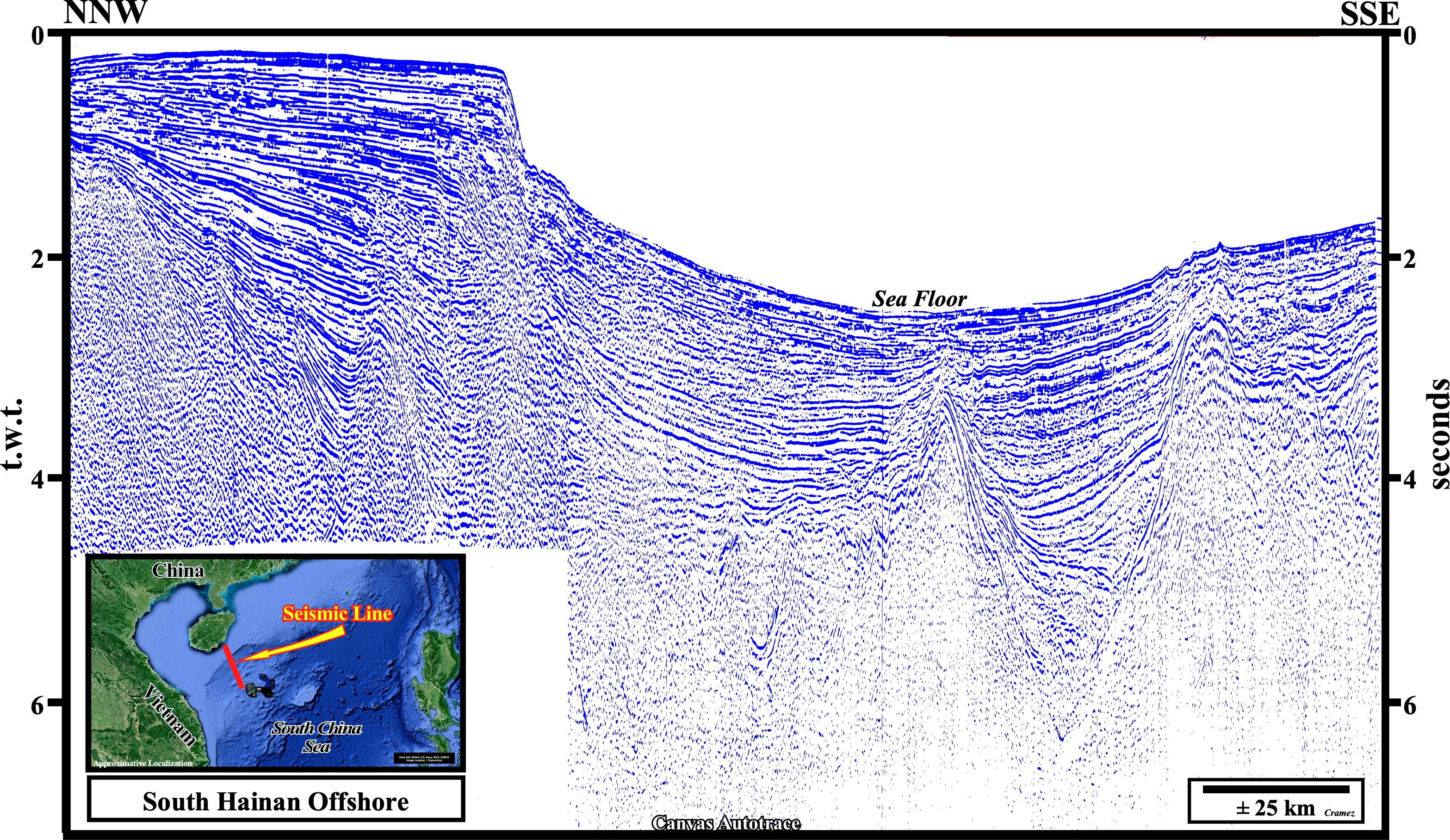
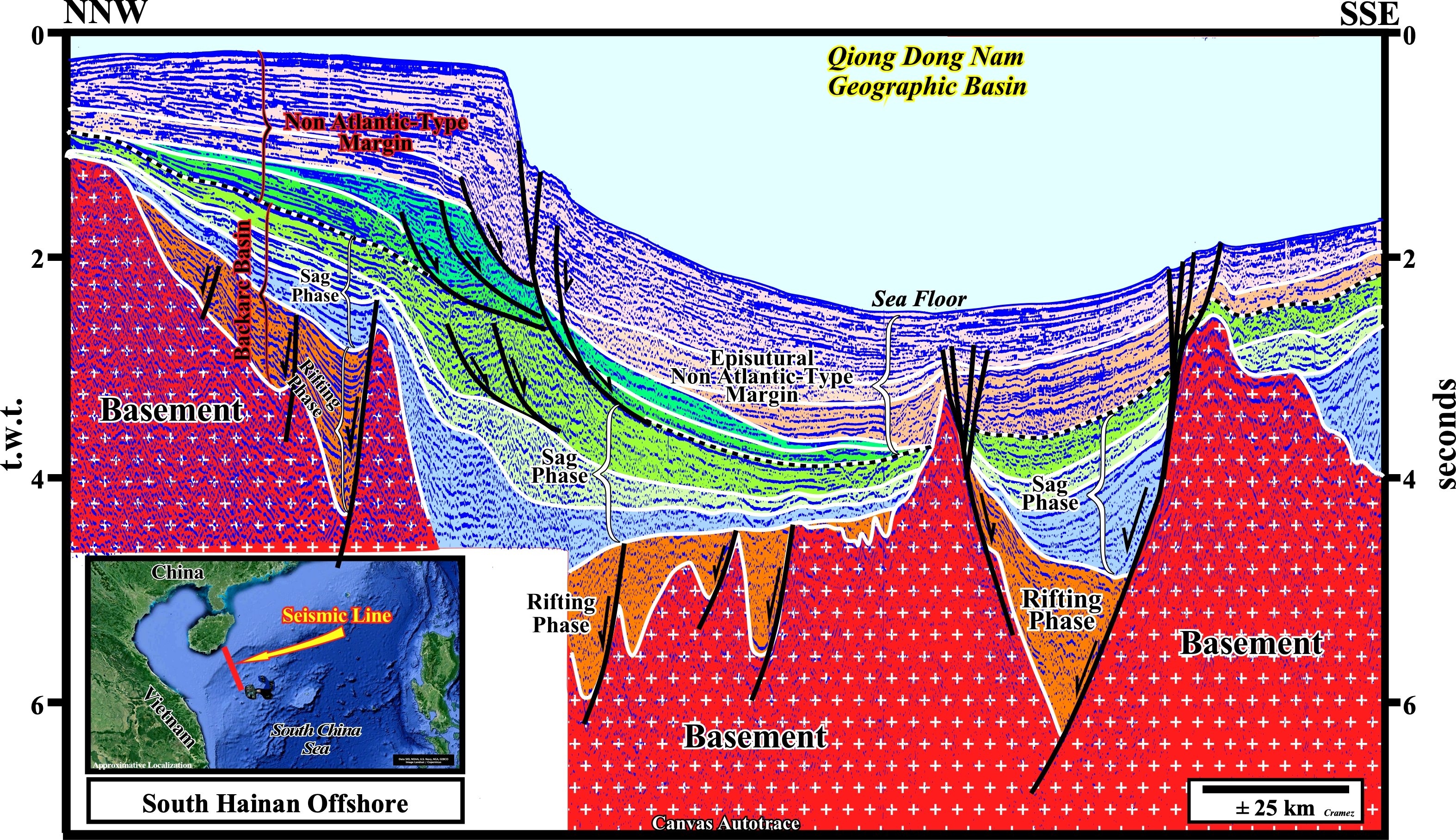
A simple glance at the location map shows the South Hainan offshore is formed by a stacking of episutural sedimentary basins, i.e., sedimentary basins developed inside of the Meso-Cenozoic megasuture. Notice that in the Bally's sedimentary basin classification, taking into account the geological time, a given area may correspond to the stacking of different sedimentary basins:. If they are developed inside or at the periphery of the megasuture, the basins, associated with the formation of a megasuture, can be subdivided in perisutural and episutural. In addition, as the episutural basins can be associated either with a type-B or type-A subduction zones, they can be forearc or backarc basins (when associated with type-B subduction) and Mediterranean or Pannonian-type basins, when associated with a type-A subduction zone. Besides, if the lengthening in a backarc basins is enough the breakup the lithosphere, i.e., enough to create an oceanization (formation of new oceanic crust), there is formation of a non Atlantic-type divergent margin (homologous to a Mediterranean-type basin developed in a type-B subduction context). The fundamental difference between Atlantic-type and non-Atlantic-type divergent margins is that the former develop in a tectonic context, globally, compressional (sedimentary shortening), i.e., they are located within the megasuture, while the latter are formed in an extensional context (sedimentary lengthening), outside of the megasuture and in association with the formation of new oceanic crust. Taking into account the geological time, a given area may correspond to the stacking of different sedimentary basins. On this tentative geological interpretation, above the basement, the half-grabens of the rifting phase of the backarc basins are quite obvious. Similarly the sag phase, characterizers by a thermal subsidence, responsible by the majority of the space available for the sediments, is easy to recognize although its upper limit is not too sharp. The non Atlantic divergent margin, which marks the oceanization of the backarc basin, i,e. the formation of a marginal sea (South China Sea) is well marked, particularly the Qiong Din Nan geographic basin.
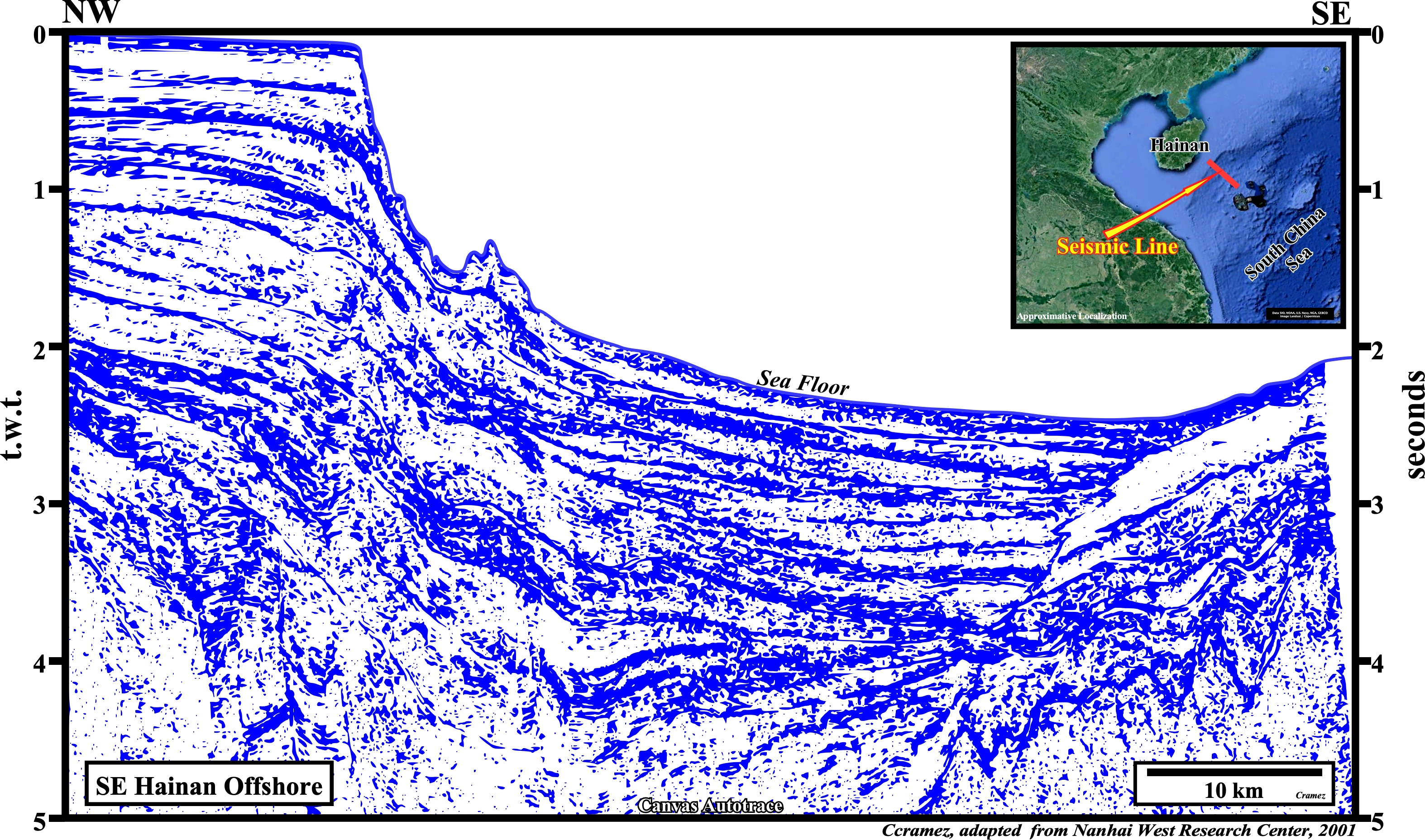
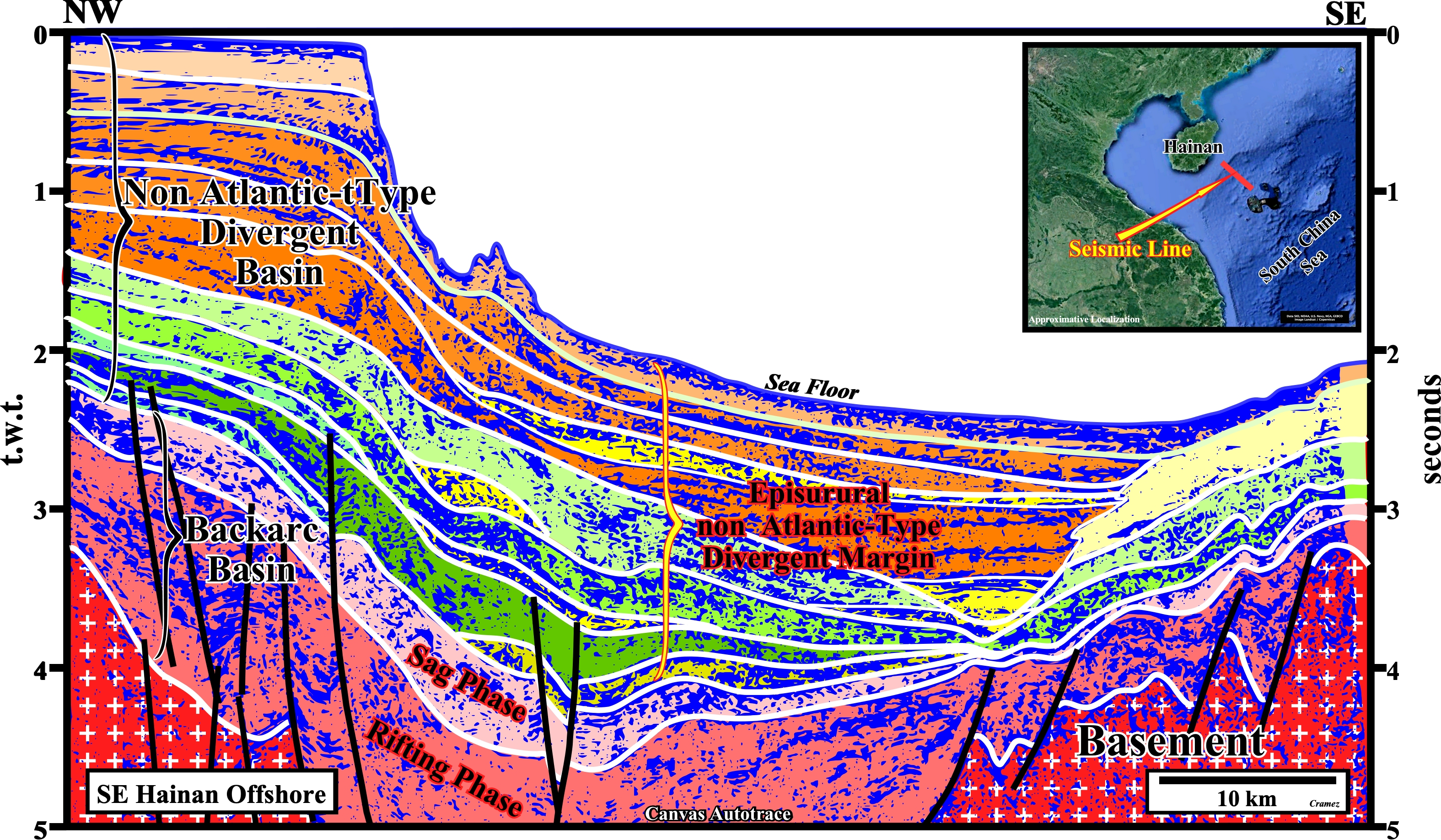
On this Canvas autotrace the rifting phase of the backarc basin is quite well developed compared with the overlying sag phase. The non Atlantic-type divergent margin, developed in association with the opening of the South China Sea (marginal sea) is, easily, recognized, particularly, by the frequent relative sea level falls, responsible by the lowstand geological situation, during which submarine turbidite systems were deposited.
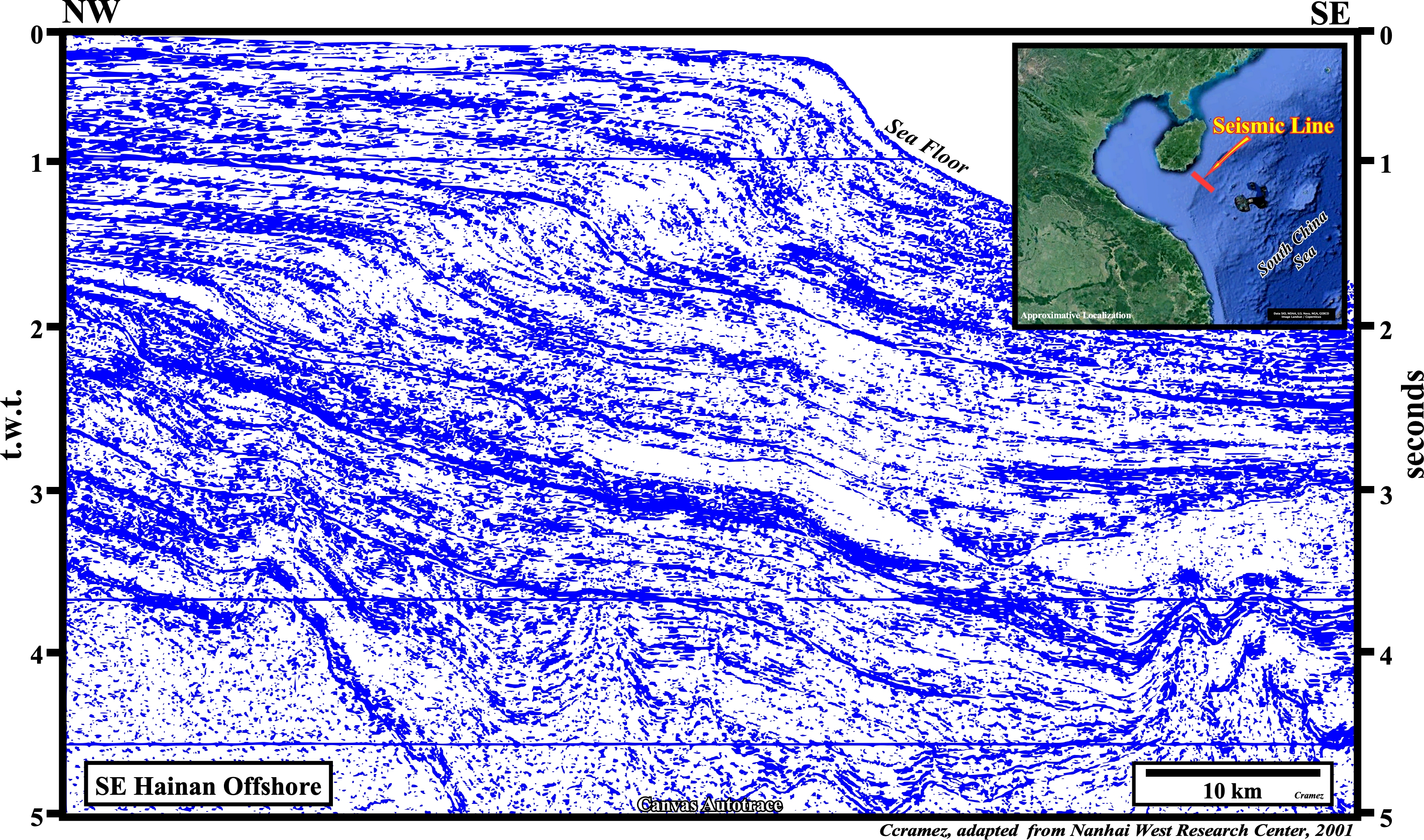
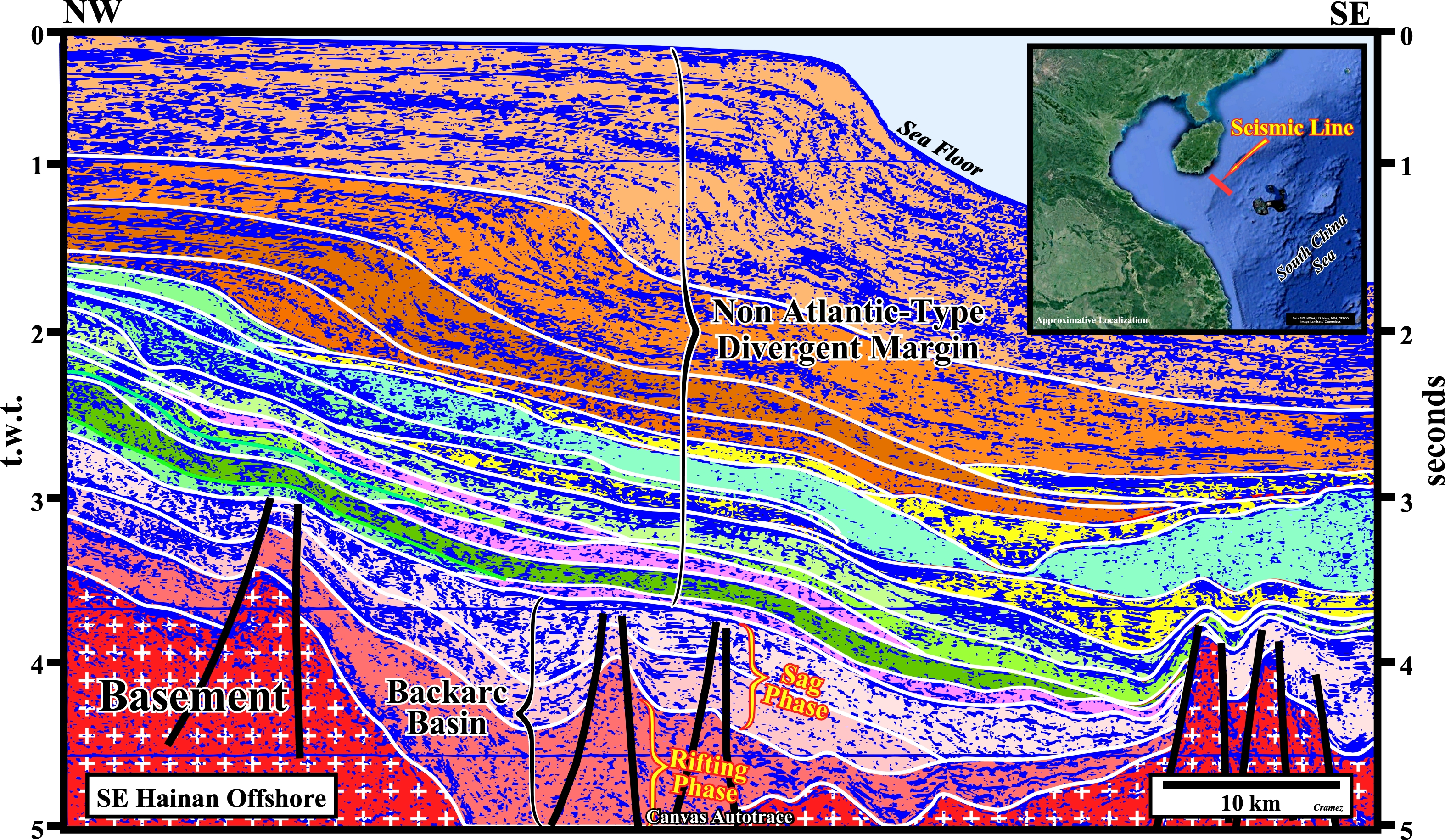
This tentative geological interpretation does not refute the previous proposed interpretation, particularly. the frequent lowstand geological situations (time interval within a stratigraphic cycle, said sequence-cycle, during which the sea level is lower than the basin edge), during which the basin edges are the last continental edge of the preceding sequence-cycle which, generally, coincides with the last depositional coastal break of the highstand prograding wedge (if the sequence-cycle is complete) and where turbidite systems, mainly submarine basin floor fans, are deposited.
Send E-mails to carlos.cramez@bluewin.ch with comments and suggestions to improve this atlas.
Copyright © 2001 CCramez
Last update:
2022